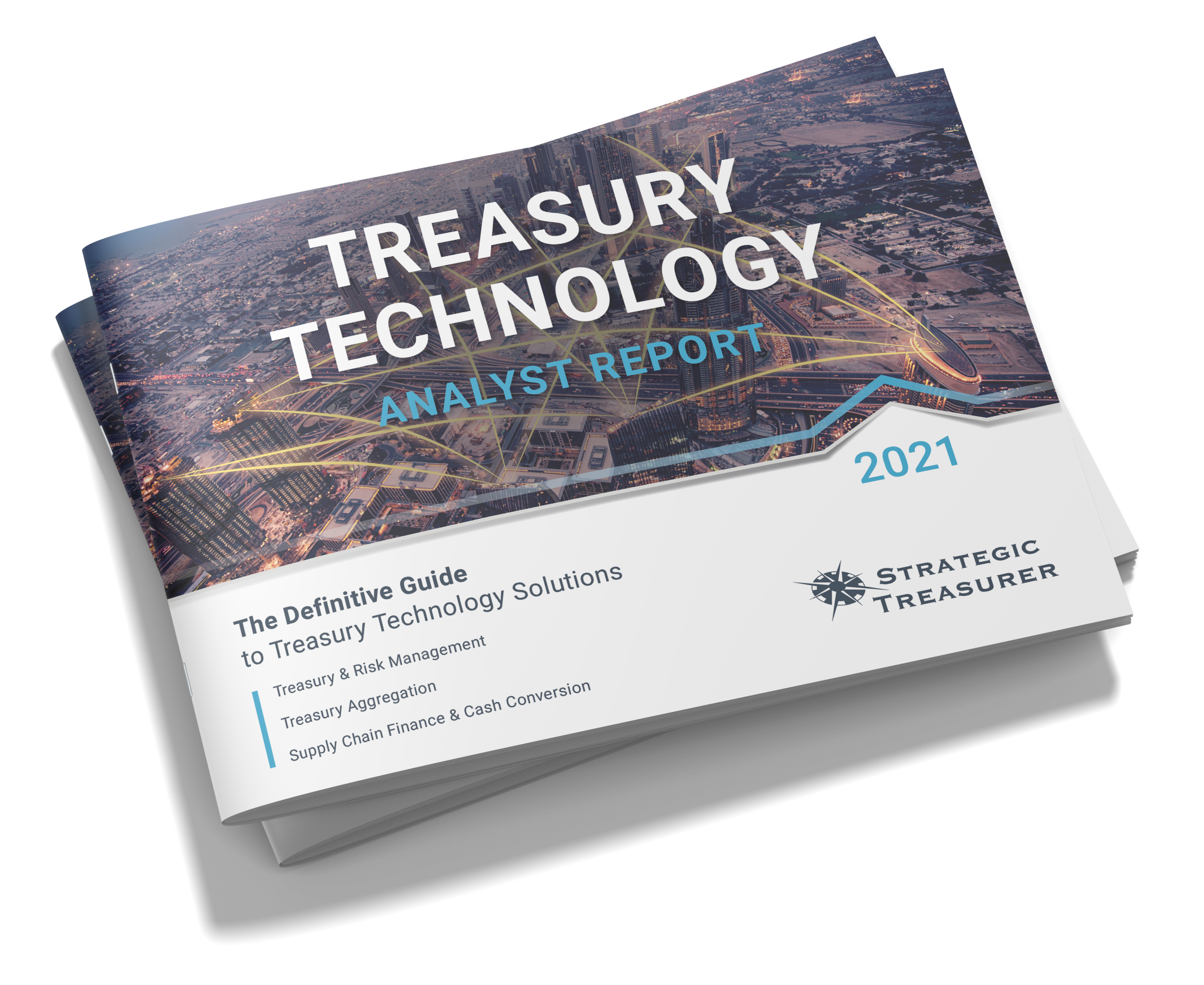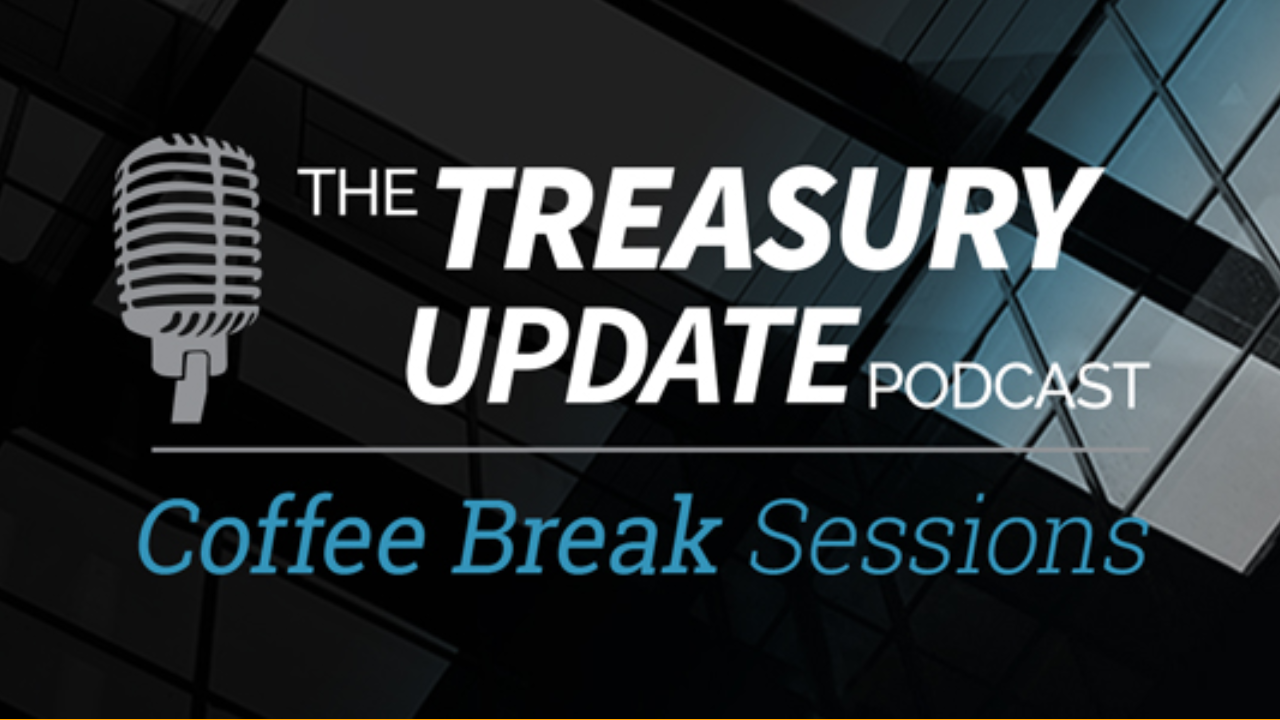
Episode 200
Speed of Fraud Escalated via Real-Time Payments
We are moving into a world of real-time payments. Criminals are adapting and using these new developments to facilitate fraudulent transfers before they’re detected and stopped. In this episode, Nicki Gillispie and Craig Jeffery of Strategic Treasurer discuss this rapidly growing issue as well as some of the long-term effects and influence of a permanent work-from-home environment.
Speaker:
Craig Jeffery, Strategic Treasurer


Subscribe to the Treasury Update Podcast on your favorite app!
Episode Transcription - Episode #200 - Speed of Fraud Escalated via Real-Time Payments
Nicki Gillispie 0:02
Welcome to The Treasury Update Podcast presented by Strategic Treasurer, your source for interesting treasury news, analysis, and insights in your car, at the gym or wherever you decide to tune in. Welcome to today’s Treasury Update Podcast. We will be going over some data and survey information. Our topics include control and fraud, COVID, and work from home, and machine learning and technology. Craig, what trends are we currently seeing with control and fraud?
Craig Jeffery 0:35
Yeah, thanks, Nikki. You know, when we think about control and fraud, this has become a bigger and bigger issue for companies and for banks over a period of far longer than five years. It’s continued to escalate. So, there’s three things and this is the information as you indicated in the lead up that we do a lot of research, so this information comes from several different surveys plus our experience. So, three things about control and fraud, faster fraud, monitoring, activities, and business email compromise. So, when we talk about faster payments, things like RTP real-time payments through the clearing house in the United States and across the board. This is a significant concern that speed is the top concern for fraud with things like real-time payments because it’s so fast people have a concern that this could lead to other fraud. Money has moved out, it settles its final, etc. So, 62% saw the shift as a risk primarily related to speed. Now, rules and newness of these platforms followed items, but you know, almost two thirds had identified that as a top item again, so there’s certainly some elements of messaging. And there’s certainly some aspects of as these products services or faster payment schemes become more standard that people become more comfortable. So, that’s the first one that key the second one is monitoring. I found it really interesting that we’re up to about a third of companies use monitoring methods that help detect potential fraud before payments are out the door. This is the concept of prevention is superior to detection. If payments are going out the door, there’s far less likelihood you’re going to recover the funds, especially as the time element expands. So, if funds have left the organization we need to follow up as quickly as possible. But the idea of having fraud prevention capturing or monitoring this activity early is massively important. And so much that we’ve seen a third of organizations tracking or monitoring this before payments go out the door. This is one of the biggest issues of protection, right, we set up controls processes, and now we have systems monitoring those so that was the second point under control and fraud. Nikki, the third one was business email compromise. This one’s not going to be a surprise. Because of the level of exposure companies have had to business email compromised the relentless aspect of these types of attacks. This is the top driver for fraud exposure, the top contributor to organizations feeling where they are exposed, you know what’s the highest risk when you look at all the different areas, it’s business email compromise. Banks identify it at a level of 87% of them say that’s the biggest risk. 73% of corporates view that as the highest risk and this is over the next one to two years. So, this has certainly been a top item historically, and it is looked at and expected to continue to be the top concern. So, we’re really, really focused on that. Banks had the advantage of they work with a lot of customers, you know at 87% it’s 14 P points than corporates, but almost three quarters of corporates recognize it as their top exposure. So those are the three top items on fraud and control that I thought were worth discussing.
Nicki Gillispie 4:15
Great, thank you. Can you tell me a little about the changes you’ve seen due to COVID and working from home?
Craig Jeffery 4:22
A couple elements of this work from home aspect that are worth highlighting I think we all have experience of people being more effective or less effective in a hybrid environment or working from home. For some that’s been the greatest thing ever because maybe they’re more introverted, they need less distractions and this provides a fantastic way for them to be more effective. Others have experienced issues of isolation and creates a more negative environment situation has been harder for some. So, there’s a there’s a mix of what’s going on with people individually. I think we all experienced that and understand that, but the two things here, I wanted to actually talk about from the survey data that we’ve looked at is how COVID is influencing permanent changes, the continued risks in this work from home environment, you know, many companies are still in the work from home environment. It’s very true that in May, April, March, in 2022, there’s been a significant return to work not necessarily on 100% manner, but on a hybrid manner, at least on the risk side. As people moved to work from home, the criminals took advantage of this new environment, the new reality, and this idea of here’s business email compromise taking advantage of COVID. That’s like, “Hey, we’re working from a different location. Please change correspondence to here or move it to here. Please change our address where you remit payments to how you send information because we’re making changes due to COVID”. And it seems obviously okay COVID is real, things that happened, and they took advantage of those types of situations as well as ordering supplies, of course. So, criminals are certainly opportunistic and did that. One of the risk factors for risk exposure, what we think about when we look at the work location to work from home was connected with the most significant areas of attempted or actual fraud in the past year, reach 78%. So, we look at fraud 78% of them had a work location aspect or an intersection with that business email compromised attempts 73%, social engineering 70%. So, similar types of spoofing, payment diversion 46% and ransomware 22%. So, ransomware is maybe not as big but the idea of people are working from different locations. Perhaps their home situation. Their home firewall is not as robust as what’s at the office. But all these items payment diversion, social engineering, BEC attacks are of all escalated, and that that reach 78% of companies at those levels that I just shared. So, criminals are opportunistic, and they’ve been able to focus on this optimistic attack for a long, long time. The second part on the work from home was the influencing of permanent change. Now, I mentioned this hybrid environment for many companies earlier that you know, people are returning the office two or three days a week, but is this is this going to be a permanent change or not a permanent change? Well, I think we can all say it’s too early to tell what will actually happen. There’s certainly changes in how people are hiring. Some people are not accepting jobs because they would have to go somewhere. Some are only accepting work from home jobs. I think there’s some of that that’s been occurring, even though there’s been a shift of much greater return to work. But here’s some of those elements that we look at for AP, you know, what happened on permanent changes well, 48% indicated COVID helped increase the adoption of EFT significantly. So, it helped move to more digital methods, the adoption of digital signing. This was awesome. So, banks and companies that were like no, we need a wet signature on paper. This is really helped us move more electronically. What do we hear about the permanent shift in the work from home environment or hybrid environment? It remains to be seen if this will be the case. But if we look at AP, AR, and treasury, we asked is there going to be a permanent shift and location of work, all at work, all to a hybrid, or all to work from home and the numbers are 43% of AP, 48% of AR 56% of treasury teams report that there is a permanent shift in location of working the vast majority of this is to a hybrid environment. But there’s some where it’s shifted all remotely in some organizations are saying and you’ve seen this with a number of banks. You’ve got to come back to the office or if you are mostly remote, you got to come back a certain period of time. So, this has really changed where work is conducted. And it’s expected to, you know, 40 to 56%. So, roughly around half of finance, is going to be in probably a hybrid environment going forward. That’s really interesting to see how that’s impact not just how we do business more digitally, signing more digitally, but also the location will be far more remote than it has been.
Nicki Gillispie 9:29
Thank you and our final topic machine learning and technology. What do you see trending here?
Craig Jeffery 9:34
Yeah, is that just a buzzword? When we talk about artificial intelligence machine learning. A couple of factors here on the systems machine learning and hiring, as we look at the over a couple years, two out of five or 40% of companies expect to undertake significant financial systems upgrade and 1/3 will increasingly leverage machine learning and about 20% or 1/5 plan to hire more treasury and finance staff. So, when we look at tech people in hiring, there’s a significant level of change. You know, systems 40% 1/3 using machine learning, and 1/5 hiring more staff. That’s notable this idea of using machine learning is primarily going to come from, at least as we look at least five years, most of that will come from system providers, built in capabilities as they build those capabilities and companies adopt them. That’s where we see that coming from and the fact that 40% are going to do significant financial systems upgrade.
Hopefully there’s some aspect of that where it’s more cloud oriented, more capable of leveraging that type of technology. And it is interesting as we see some of this technology like AI and machine learning. This is having in some areas, a negative impact on staff in terms of numbers. It’s reducing staff. It’s a really fantastic tools that can do much more in areas like auditing, for example, I wouldn’t say suffering but they’re definitely experiencing reduced number of staff required to do it because these automated tools can dig through and sift through material far faster than a person can by themselves. So, it’s the managers who are reviewing and looking at it are using much more powerful tools, kind of equivalent of digging with a shovel or an earthmover. They’re able to get at more. That’s one key area of use. On the technology side APIs for example, we have to assume that this is no longer just a buzzword.
If you look at the next two years, we expect to double this use in two years. And right now, APIs are used by about a third of the survey respondents, people that have responded, so 34% and another 35% plan to adopt it shortly. So, that’s a that’s a doubling from about a third to a little over two thirds in a short time horizon. So, APIs are expanding. They’re easy to connect, easier to get set up once they’re established. This is no longer a buzzword. We’re almost at the halfway point of half of organizations are using those. And when we see companies use it, they start using it they continue to expand it and then they won’t put up with really old technology methods. It might be slower, harder to maintain, harder to set up and harder to maintain. So, those are two tests and machine learning items that I thought were important, but one final comment Nikki on that is what’s going on with tech.
There’s a nervous excitement about this technology. 22% are nervous about AI and machine learning. 12% were nervous about it last year. So, you know, I know there’s some margin of error and in the numbers that we have, but 12 to 22% I think there’s a significant growth about nervous and so that’s the glass is half empty. I guess the glass is 78% empty, but the who was excited about new technology 82%. So, when you say 82% and 22% You know, that’s over 100% So, some are excited and nervous about it. And I think that’s reasonable. It’s a kind of a nervous excitement.
This is also kind of I think this is useful for those who are constant learners, people who listen to podcasts. So, think about others who don’t stay current, 39% are concerned about their staff, not upskilling. And so, whether it’s not upskilling about, you know API use or how you can leverage tools like AI and machine learning or what’s changed on the technology front. There’s a number of ramifications for that. So, those are the things that matter in our discussion about machine learning and technology from just a quick summary.
There’s certainly a lot more information that people can access through links to the some of the research reports we have from surveys. And I think we’ll put those in the show notes so that they can get them. Thanks. Thanks for those questions on these topics. They can.
Nicki Gillispie 13:58
Great, thank you so much for your time.
Craig Jeffery 14:02
You’ve reached the end of another episode of the Treasury update podcast.
Outro 14:06
You’ve reached the end of another episode of The Treasury Update podcast. Be sure to follow Strategic Treasurer on LinkedIn, just search for Strategic Treasurer. This podcast is provided for informational purposes only, and statements made by Strategic Treasurer LLC on this podcast, are not intended as legal, business, consulting, or tax advice. For more information, visit and bookmark strategictreasurer.com
Related Resources
Treasury Technology Analyst Report
Researching new treasury and finance technology can be overwhelming. Strategic Treasurer has stepped in to help. Explore our definitive guide to the treasury technology landscape and discover detailed, data-based coverage of each area.








